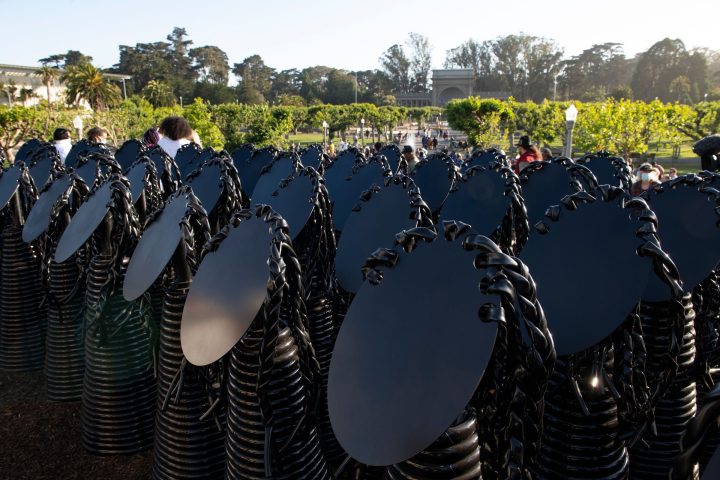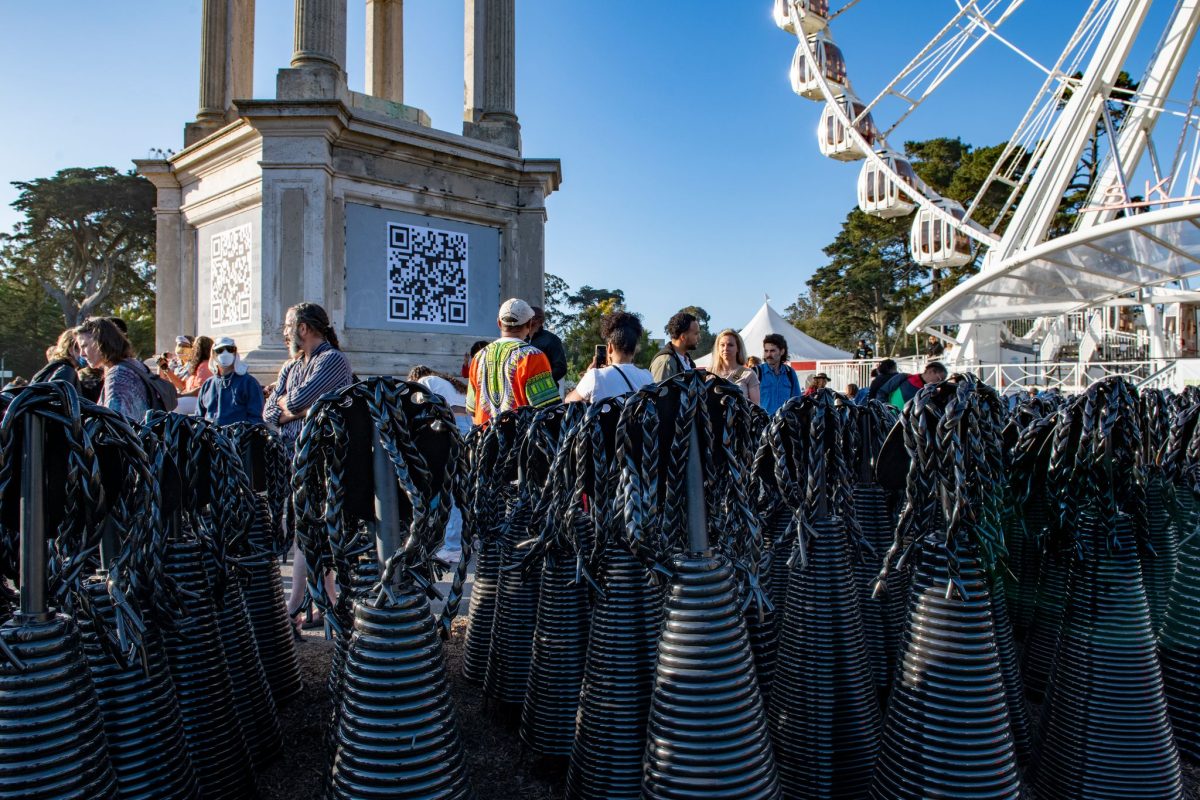
SAN FRANCISCO — On a recent Friday morning, Dana King drove across the Bay Bridge from her home in Oakland to San Francisco’s Golden Gate Park to check on “Monumental Reckoning,” 350 sculptures she created to represent the first Africans kidnapped and sold into slavery in 1619.
The steel sculptures with vinyl tubing surround the base of a plinth that formerly held a statue of Francis Scott Key, the author of “The Star-Spangled Banner,” who owned enslaved people and was anti-abolitionist. Last Juneteenth, with a national debate over monuments following the murder of George Floyd by a police officer, people toppled the statue of Key. It was time for it to go, King said.
“It’s been there for more than 140 years, resonating that same hate, that same energetic,” she said. “So, I thought it was important to surround it.”
King’s work is right across from the park’s music concourse, which was just redone. Ben Davis of Illuminate the Arts, who did the renovation, wanted to put the words “Lift Every Voice and Sing” (the name of what’s called the Black national anthem) above the concourse. He asked King, who is known for sculpting Black bodies in bronze, if she wanted to make a statue of civil rights champion James Weldon Johnson, the author of the song, and install it where the Key’s statue stood. She said no.
Instead, she proposed covering the plinth with what she calls a “divinely feminine design.” But Ralph Remington, the director of cultural affairs for the San Francisco Arts Commission, who is starting a committee to review the city’s monuments, said he didn’t want to do anything to the actual plinth until the committee had met. So, King proposed the current installation. Now, she says, she has 350 statues of female energy, all subtly distinct — for instance, the braids at the crown of the statues, were done by friends and friends of friends who showed up wanting to help.

“Everyone braided the way they grew up braiding,” she said. “The loose ones are mine. Some are triple braided. It’s awesome — there are 350 of them and while there is a uniformity, if you look closely, they’re all different.”
Remington first saw the statues at King’s studio before they were unveiled at a Juneteenth event this year, and he joined in the braiding, so he jokes he has some “minimal skin in the game.” He thinks this iteration is even more powerful than what King originally proposed.
“It’s a gut punch,” he said. “When one sees it, you can’t help but shiver and you can’t help but feel the immensity of the act of the transatlantic slave trade. It makes one speechless.”

A lot of viewers seem to agree. As King talked about her work, adjusting the flowers in the braids from the unveiling, several people recognized her (King used to be a newscaster at the CBS local station), and complemented her on her work, calling it “striking,” “moving,” and “powerful.”
King says she’s grateful for the support of the city and for the shift in the ways people think about memorials and public art.
“I feel like the monuments that exist that were created to intimidate and to harm people, they have to go,” she said. “They only tell part of the story, and this is about representation in public space. It’s vital. It’s vital to every culture to be seen.”
0 Commentaires